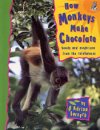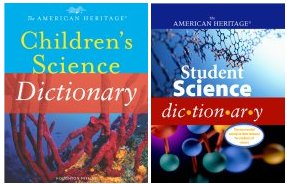Chocolate Rules Additional Information
Share this:
- Share via email (Opens in new window) Email
- Click to share on Facebook (Opens in new window) Facebook
- Click to share on X (Opens in new window) X
- Click to share on Pinterest (Opens in new window) Pinterest
- Click to share on Reddit (Opens in new window) Reddit
- Share to Google Classroom (Opens in new window) Google Classroom
- Click to print (Opens in new window) Print
A history of chocolate and other information about this treat is available at www.fieldmuseum.org/Chocolate/history.html(Field Museum).
You can learn more about where chocolate comes from and how it’s made at home.howstuffworks.com/chocolate.htm(How Stuff Works).
Raloff, Janet. 2004. Cardiovascular showdown—chocolate vs. coffee. Science News Online (May 29). Available at http://www.sciencenews.org/articles/20040529/food.asp.
______. 2001. Chocolate-science news. Science News Online (March 31). Available at http://www.sciencenews.org/articles/20010331/food.asp.
______. 2000. Chocolate therapies (with recipe for Janet’s chocolate medicinal mousse pie). Science News Online (Sept. 16). Available at http://www.sciencenews.org/articles/20000916/food.asp.
______. 2000. Chocolate hearts. Science News 157(March 18):188-190. Available at http://www.sciencenews.org/articles/20000318/bob10.asp.
______. 1996. Prescription-strength chocolate. Science News Online (Oct. 12). Available at http://www.sciencenews.org/pages/sn_arch/10_12_96/food.htm.
Books recommended by SearchIt!Science:
 |
How Monkeys Make Chocolate— Adrian Forsyth
Published by Owl Books, 1995.
Capuchin monkeys get excited when they see long, orange pods growing out of the trunk of cacao trees. They smash the pods against branches to open them, and eat the sweet pulp from the fruit. But the seeds are filled with bitter cacao, so the monkeys spit them out. This is nature’s ingenious method for spreading cacao seeds. In this book, learn about the fascinating relationships between rainforest plants and animals. Find out why cherries are red, and learn about exotic rainforest fruits, as well as annatto arils, Brazil nuts, and vanilla orchids. Discover the uses of chicle sap, and find out about the painful effects of some poisonous rainforest plants. Vivid full-color photographs enhance this personal narrative by author and rainforest trekker Adrian Forsyth, who introduces the reader to not only a wide variety of exotic plants and animals, but also the native rainforest peoples and their traditions. |
 |
How Sweet It Is (and Was): The History of Candy— Ruth Freeman Swain
Published by Holiday House, 2003.
What was candy like before people learned to refine sugar? Would you like to attend a banquet where all the plates and goblets were made out of sugar? Where does chocolate come from? How has technology changed candy? Find the answers to these candied questions, and more, in this illustrated history of candy. Cartoon-like illustrations accompany the fact-filled text, which begins with the use of sugarcane in India. Learn about maple sugaring, the history of chocolate, early American “penny candy”, and the accidental invention of fudge. If your sweet tooth is ready to nibble by the end of the book, a few recipes are appended, as well as a timeline of candy history. |
Power Words
diffusion The tendency of two substances that are mixed together to move around until both substances are in all parts of the mixture. When no part of the mixture has more of one substance than any other part, diffusion is complete. When lemon juice is
added to a glass of water, the juice mixes with the water by diffusion, until all the liquid tastes like lemon juice.
emulsion A mixture of two liquids in which tiny droplets of the first liquid are mixed throughout the second. Oils can be mixed with water to form emulsions like paint.
fermentation The breaking down of larger chemical compounds into simpler substances when no oxygen is present. Fermentation produces energy and occurs especially in muscle cells, as well as in plants and some bacteria. Yeast turns sugars into alcohol and carbon dioxide by fermentation.
Copyright © 2002, 2003 Houghton-Mifflin Company. All rights reserved. Used with permission.
